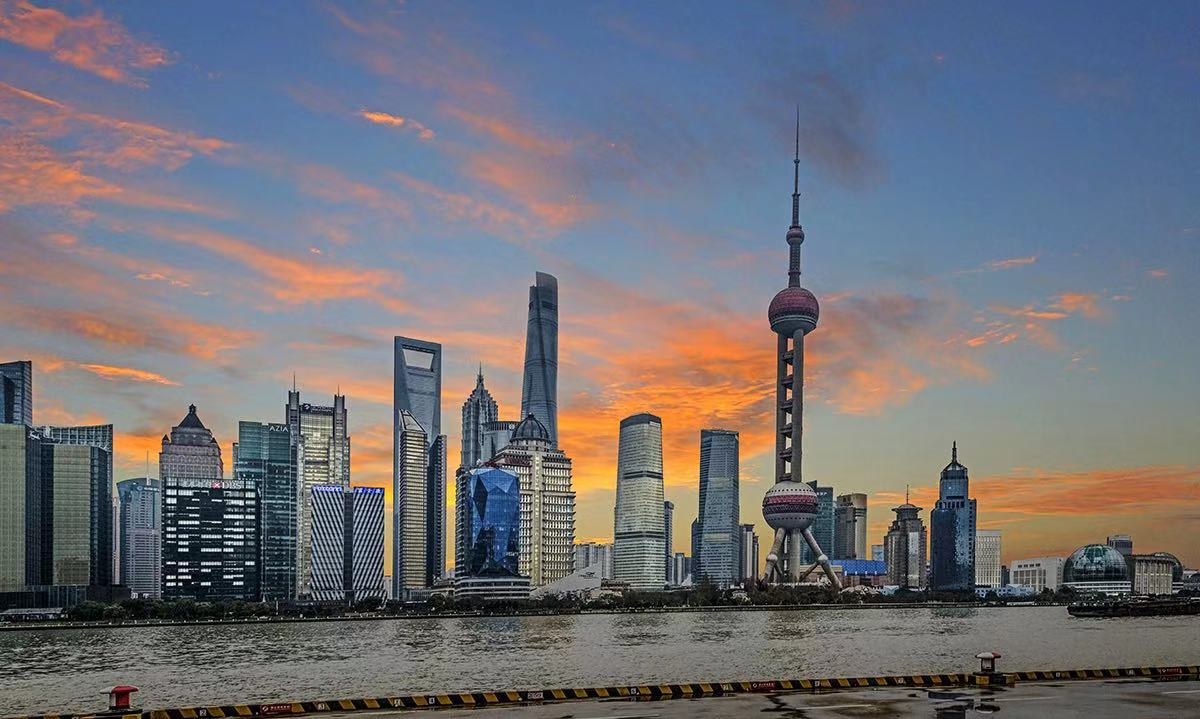
The Lujiazui Financial District beside the Huangpu River in Pudong New Area, Shanghai, 2019. (Photo provided to Xinhua by Mike Emery)
Eight pairs of photos by British photographer Mike Emery are selected to walk you through the past and the present of China.
BEIJING, Sept. 30 (Xinhua) -- Today, one day before the 70th anniversary of the founding of the People's Republic of China, we are sharing something special -- a collection of photographs by British photographer Mike Emery that illustrate China's transformation.
In 1980, aged 23, Emery traveled to Shanghai. He was one of the first foreigners to see inside China as the country embarked on its historic reform and opening-up period.
This year, Emery revisited China, astounded by the unimaginable transformations that have taken place in the country and in the lives of its people.
We have selected eight pairs of photos by Emery and Xinhua News Agency, to walk you through the past and the present of China.
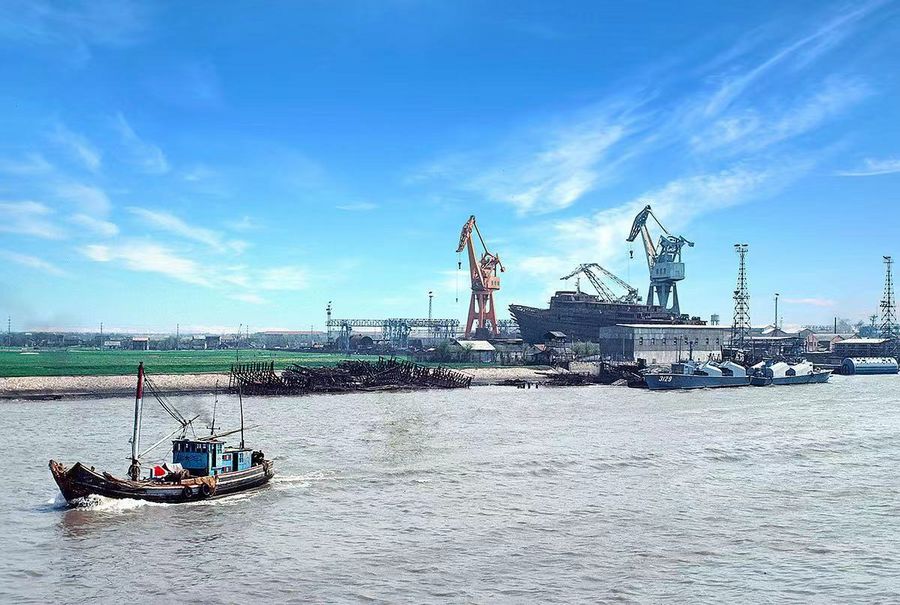
Huangpu River, Shanghai, 1980. (Photo provided to Xinhua by Mike Emery)
In 1980, Emery's lens focused on what was to become Pudong New Area -- green fields and nascent urban sprawl.
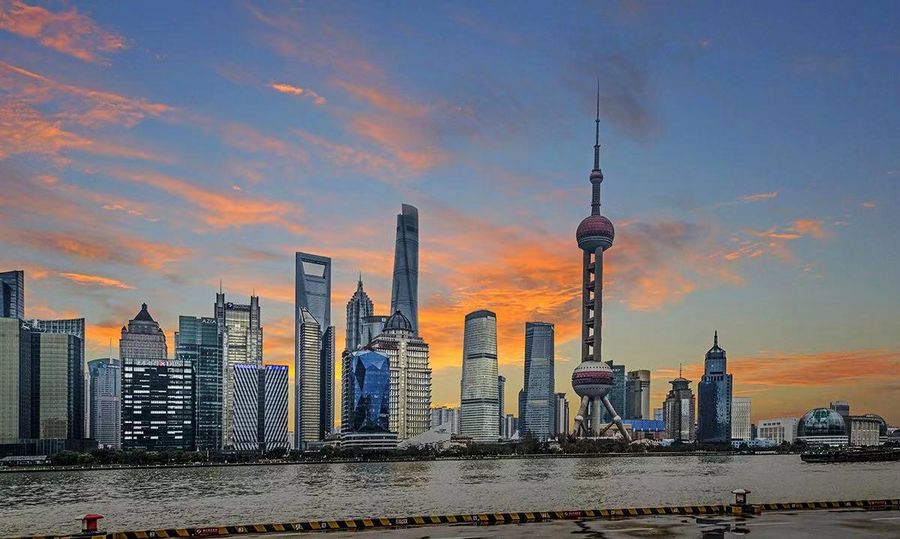
The Lujiazui Financial District beside the Huangpu River in Pudong New Area, Shanghai, 2019. (Photo provided to Xinhua by Mike Emery)
Today, the modern skyscrapers in Lujiazui, Pudong New Area, creating the iconic city skyline synonymous with China's economic success. The reform and opening-up period elevated the sleepy, rural marshland to a dynamic central business district with global influence.
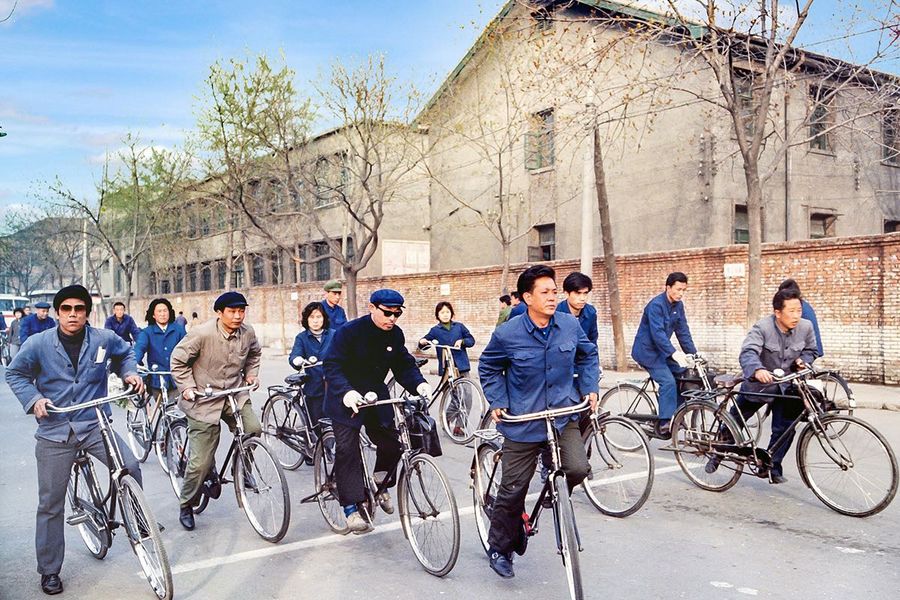
Race time in Shanghai, people are all peddling away either going to work or going home, 1980. (Photo provided to Xinhua by Mike Emery)
Forty years ago, cars were out of reach for ordinary Chinese and bicycles were king, earning China the accolade the "kingdom of bicycles."
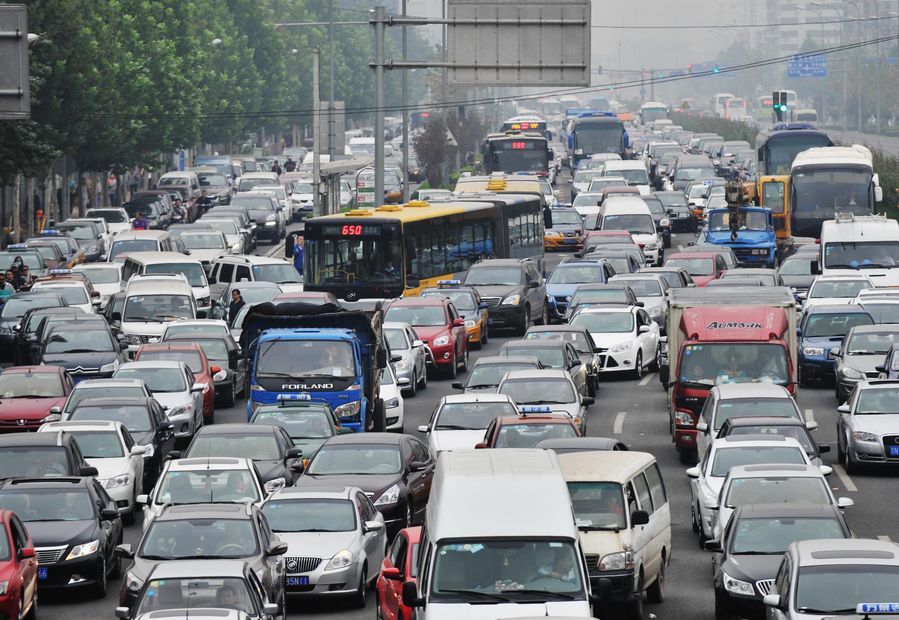
A main road of Beijing is crammed with cars in Beijing, capital of China, Sept. 22, 2014. (Xinhua/Li Wen)
Today, four wheels prevail over bicycles on urban roads. There are more than 184 million cars in China today, equal to over 40 motor vehicles for every 100 families. Meanwhile, China is investing heavily in high-speed railways, new energy vehicles and autonomous vehicles, taking the lead in global auto technology innovation.
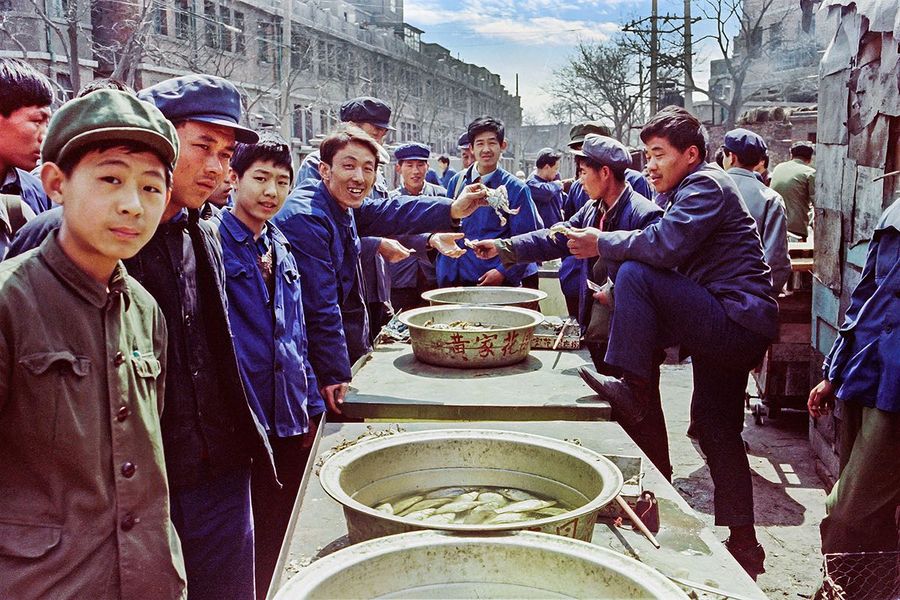
Street sellers are selling crabs and small fish to customers who all wear similar style uniforms, 1980. (Photo provided to Xinhua by Mike Emery)
Four decades ago, eating at restaurants was a luxury for most people in China.
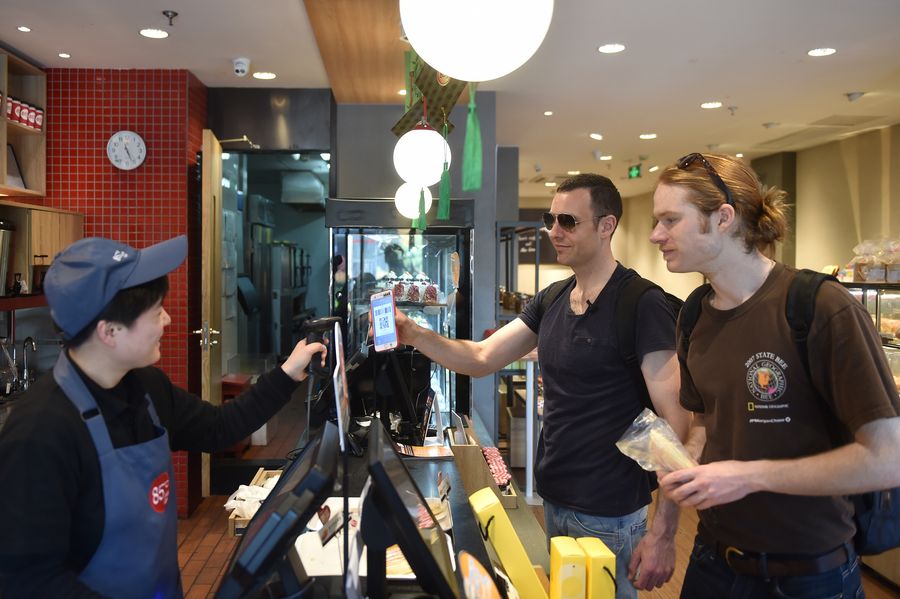
Tim Clancy (C), an Australian who has lived in Hangzhou for six years with his Chinese wife, takes his American friend to buy coffee and bread through mobile payment in Hangzhou, capital of east China's Zhejiang Province, April 14, 2017. (Xinhua/Huang Zongzhi)
Today, not only have dining experiences changed, but so too have the way people pay -- with mobile payment apps replacing cash and credit cards as the main mode of payment.
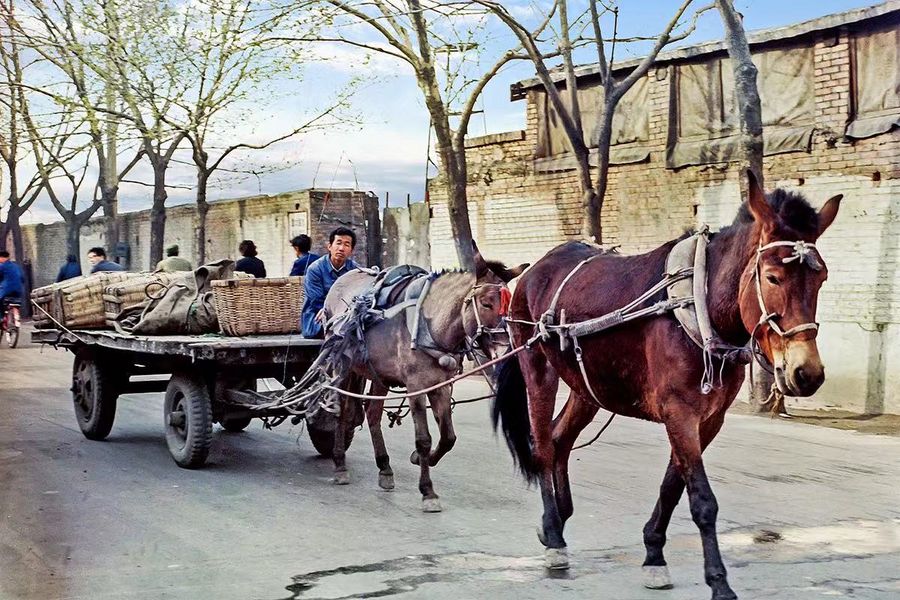
A man is carrying bamboo baskets probably carrying vegetables from the country side, 1980. (Photo provided to Xinhua by Mike Emery)
It was not so long ago that donkeys and mules were the main way to transport goods and people.
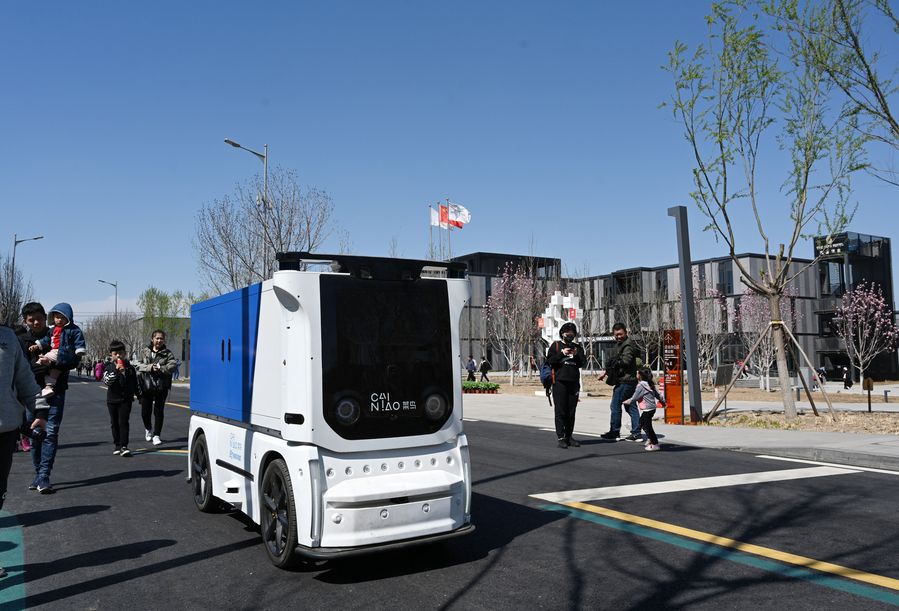
An unmanned express delivery vehicle runs on a street in north China's Hebei Province, on March 31, 2019. The new energy vehicle can convey about 200 small packages at one time from delivery station to intelligent cabinet. (Xinhua/Jin Liangkuai)
Today, high-tech manufacturing has made life easier with trains, planes and even unmanned drones, delivering packages. Foods and goods from across the globe can arrive at your doorstep with a simple click on your phone.
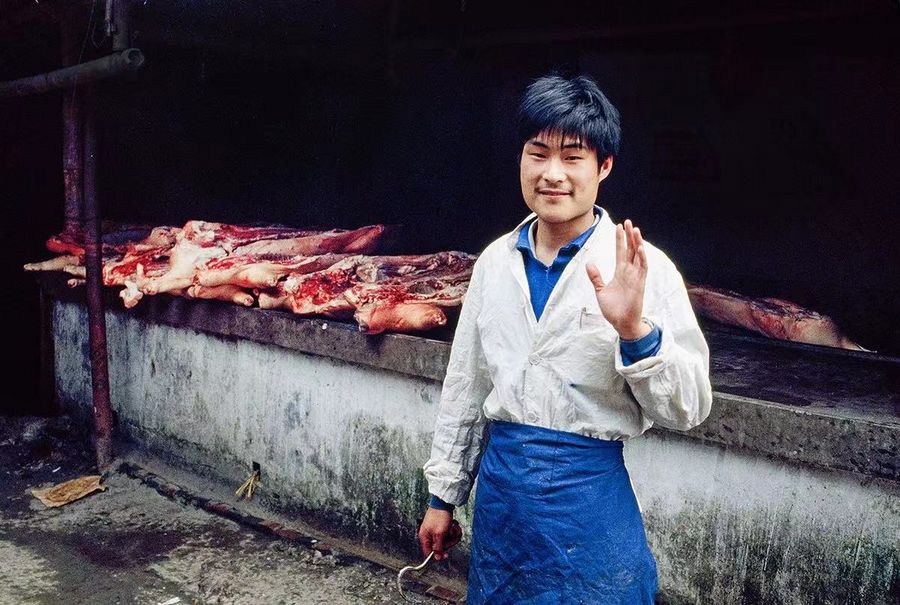
A butcher is waving to the camera in China, 1980. (Photo provided to Xinhua by Mike Emery)
Although the friendliness of the local butchers remains, sanitation has come on in leaps and bounds.
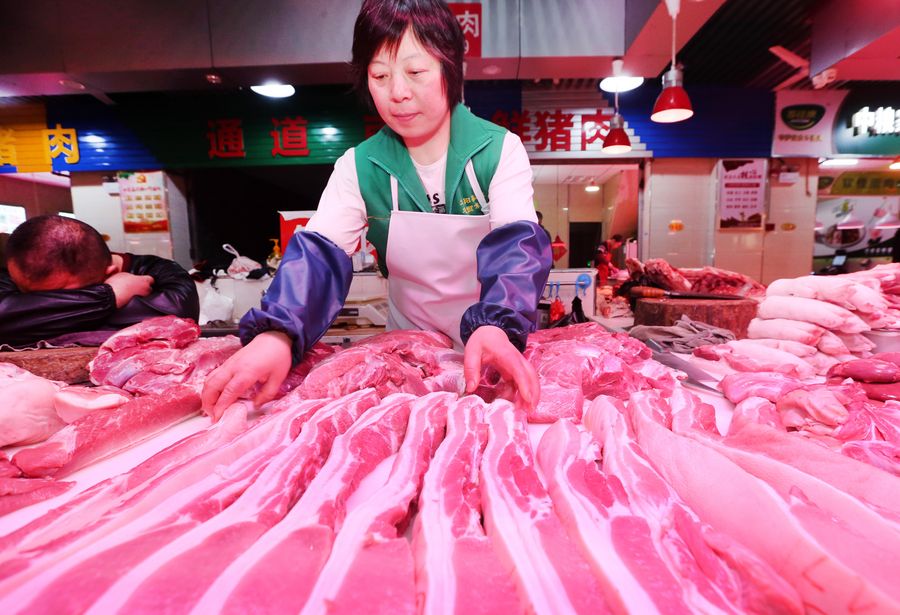
A butcher sells pork at a market in Nantong City of east China's Jiangsu Province, April 11, 2018. (Xinhua/Xu Congjun)
Today, food safety and sanitation have improved and sellers can focus on customized services.
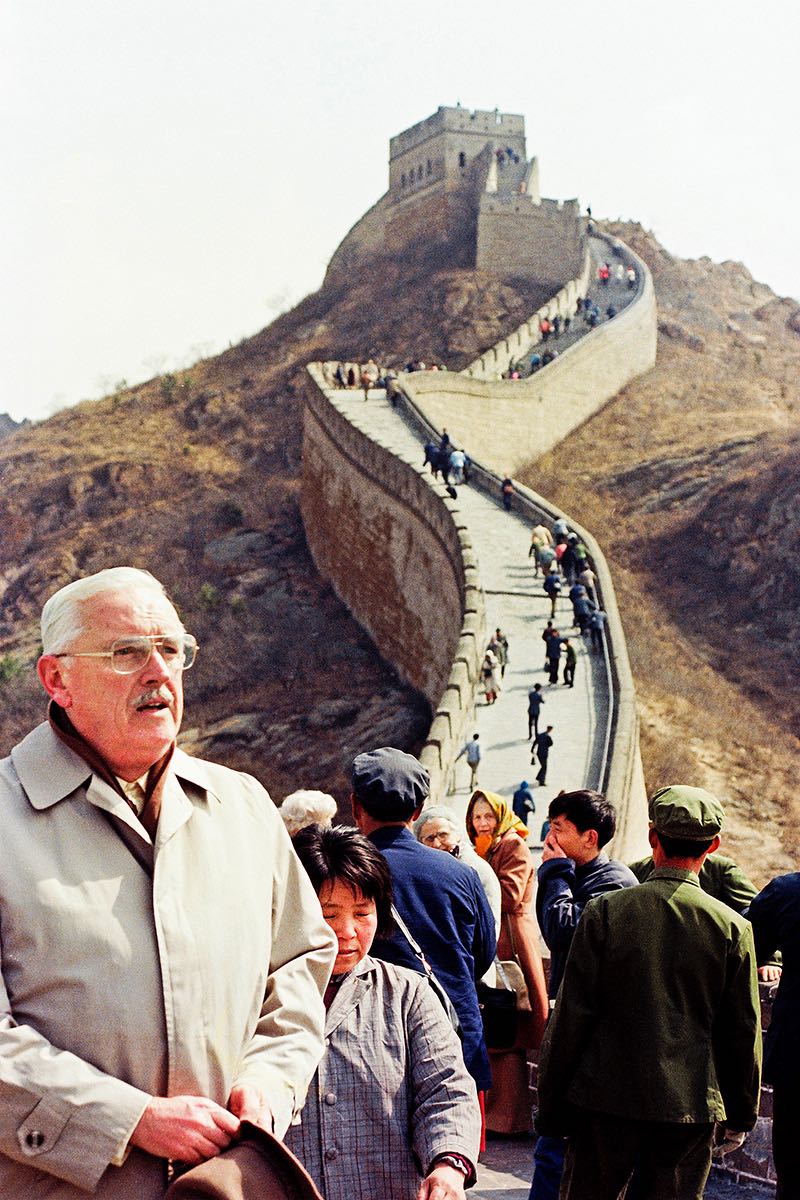
An American is visiting the Great Wall, 1980. (Photo provided to Xinhua by Mike Emery)
This was spring 1980, very few Americans had walked along the Great Wall, an iconic tourist destination in Beijing. This gentleman asked Emery to photograph him with the Great Wall in the distance.
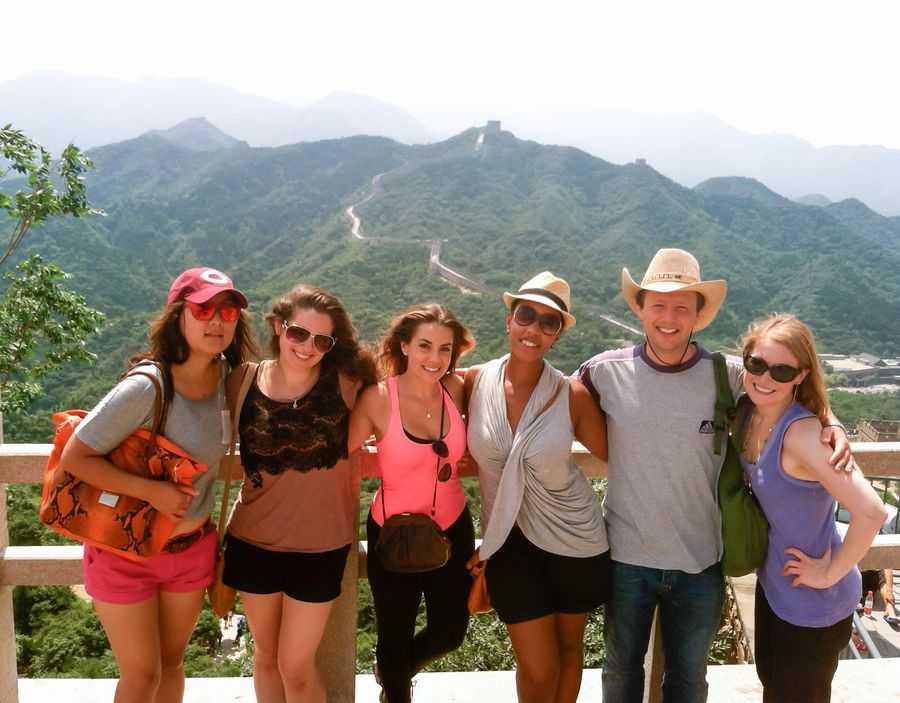
Young musicians attending "I Sing Beijing" project pose for a group photo on the Great Wall in Beijing, capital of China, Aug. 6, 2012. (Xinhua/Luo Xiaoguang)
Today, the Great Wall has become one of the most popular tourist destinations for foreign visitors in China. The Badaling section in Beijing has limited visitors to 65,000 a day since June 1 in an effort to guarantee the safety of the site and tourists.
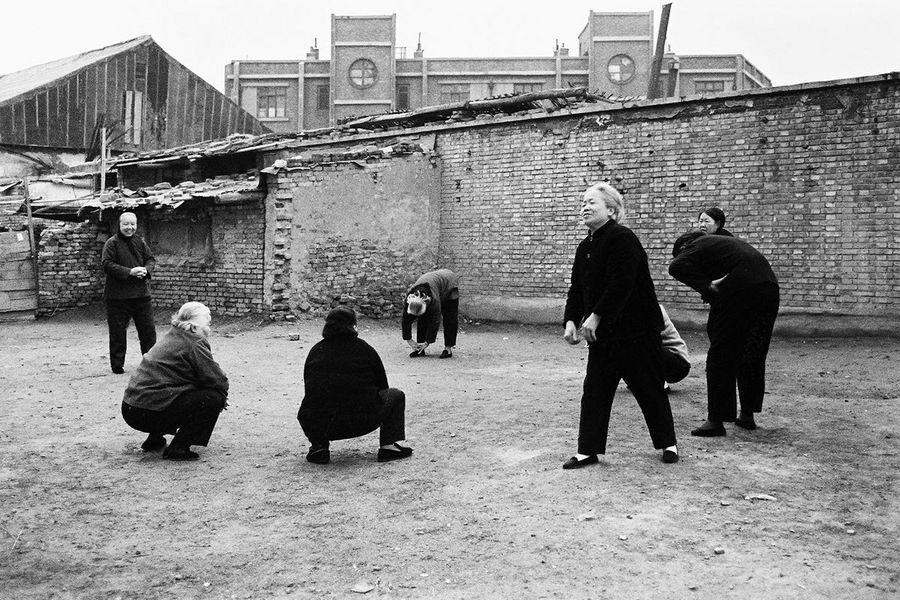
A group of ladies up early are exercising at an open ground opposite the famous Beijing Friendship Hotel, 1980. (Photo provided to Xinhua by Mike Emery)
Public spaces available to outdoor exercising were once quite limited, so people usually exercised on scrubland between buildings.
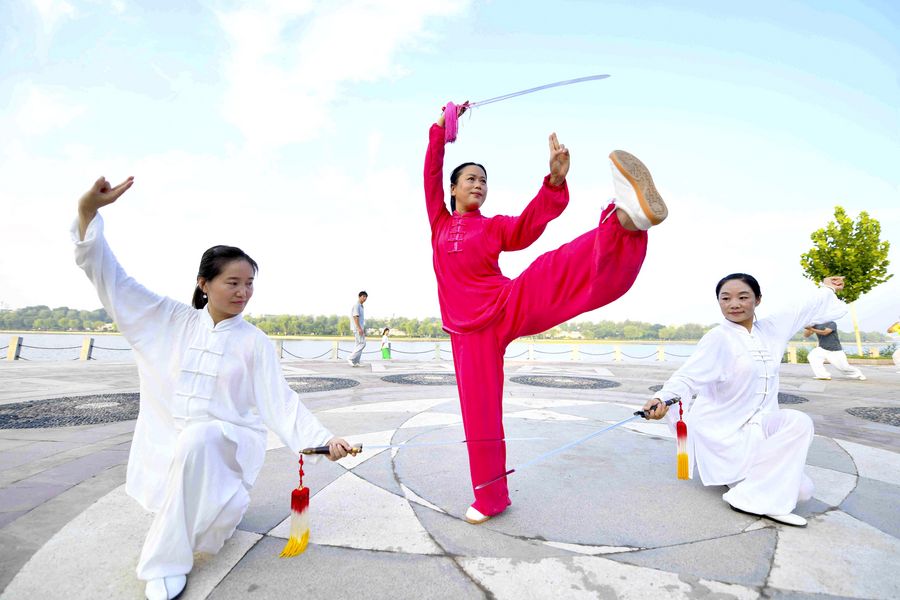
Citizens do morning exercises at the Wohe Park in Bozhou, east China's Anhui Province, Aug. 3, 2018. (Xinhua/Liu Qinli)
In 2019 alone, 31 parks will be added to the capital, meaning that 83 percent of the city will have a park within 500 meters. Whenever it is early in the morning or late at night, people dancing, running, or exercising at green parks have become a regular sight.

Children at a preschool on the outskirts of Beijing. Boy and girls wore colorful jackets and padded trousers to keep the cold out, 1980. (Photo provided to Xinhua by Mike Emery)
Decades ago, schools and their curriculum were very basic in kindergartens across China.

Kids are dressed up to perform the Weishui Sixian in a kindergarten in Jingxing County of Shijiazhuang City, capital of north China's Hebei Province, Aug. 20, 2019. Sixian is a local opera in Hebei as well as a provincial intangible cultural heritage. (Xinhua/Zhao Danhui)
Today, modern kindergartens are usually well-quipped and there are a wide range of classes available, such as music, P.E. and science.■



